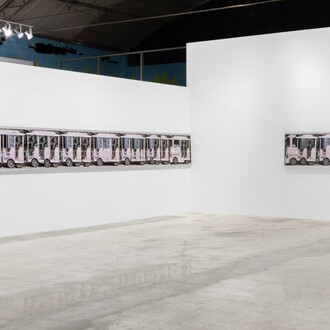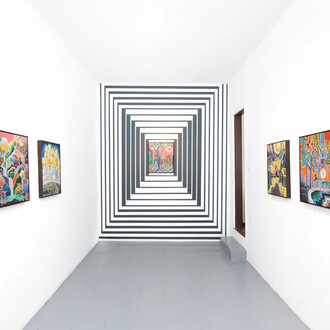Somewhere in Aristotle’s ethics it is said that the thing that differentiates us from animals is our language capacity. Such a distinction cannot be applied to feelings; it would be wrong to think that other living beings do not have feelings, or as Aristotle said, that they feel things in a different way to us. Nevertheless, our language capacity manifests in such a distinct way that we can safely say that it is something unique to the human species. Such an assertion suggests that language is a faculty that is acquired in an evocative manner, but it could also be thought of as a mental organ, which enables us to speak, as if it were a tangible part of our body like a hand, an ear or a stomach. Just like when we eat and we ask ourselves: what happens in the stomach during digestion? If language is an organ, this fact would beg the question: what happens in this organ when we speak?
It is fascinating to explore life and forms of communication. We know that animals communicate with one another, just like plants, and we constantly point towards artificial intelligence and the capacity of machines to think. We discern between speaking and communication: those that do not speak have not been endowed with the gift of intelligence, which is why we have been quick to give software its own voice, such as Siri and Alexa, two female voices that listen—and no doubt record—and interpret our voice and our wishes. Until recently, if someone alluded to a deeper form of communication with animals, they would come up against the condescension of those who believe that it is best to humour such fantasies or, at best, a metaphor that points to a desire but that does not represent reality.
It was recently discovered that there is a gut-brain communication axis, and hence the phrase “you are what you eat” is yet more pertinent, given that signals between the gut and the brain travel through the vagus nerve to the brain cells. In other words, the communication domain has expanded to a great extent, planting seeds of doubt within this modern alliance of language and power that is so heavily associated with the intellectual sphere. An increasingly more popular conviction is that a world uninhabited by words exists, but that does not mean to say it is a silent world. We must therefore ask ourselves: what happens in this domain? The work of Teresa Solar is based on sculpture. Making and sculpting are two distinct actions, and in her first exhibition in Mexico, the artist asks that we ponder this difference. Most of the works presented here are based on making, an action that is squarely aimed at understanding the relationship between worlds that do not speak and those that do. From a historical perspective, when a work of art leaves us speechless, it is because we channel all potential for linguistic expression into it, and all that we are left with is the silence of contemplation. The work of Solar, however, keeps on talking. Her modelled sculptures bear witness to how hands, much like the vagus nerve cells of our gut, can establish a form of direct communication with the materials, with form and with space. Each turn of the potter’s wheel is felt by our hands, creating a communicative event that our hands remember. We must regard Solar’s pieces as if they were a modern-day databank. They may not look like large servers stored in air-conditioned chambers, but they are. They explore not only the memory of her pieces, but the great and eloquent memory of all the hands, movements, earth, potter’s wheels, shapes and hollow spaces that “making” has bestowed us with over time. Who could better address the need for imagining new epistemological strategies, not just for expanding our knowledge of all that surrounds us, but to understand how a lack of words does not equal a lack of understanding or the desire to decide on its own continuity and its own history?
These curves formed by the convergence of hands and materials, and those tubes with their convex forms do cast some doubt however: could it be that words are not that different from tangible things, that they are nothing but a form of representation and little else, which we would have used to build a world, just as Solar has done. We are transmitted information through our senses, which requires its own translation system: words. However, now we know that we can listen with our hands, think with our stomach and look with our skin.












